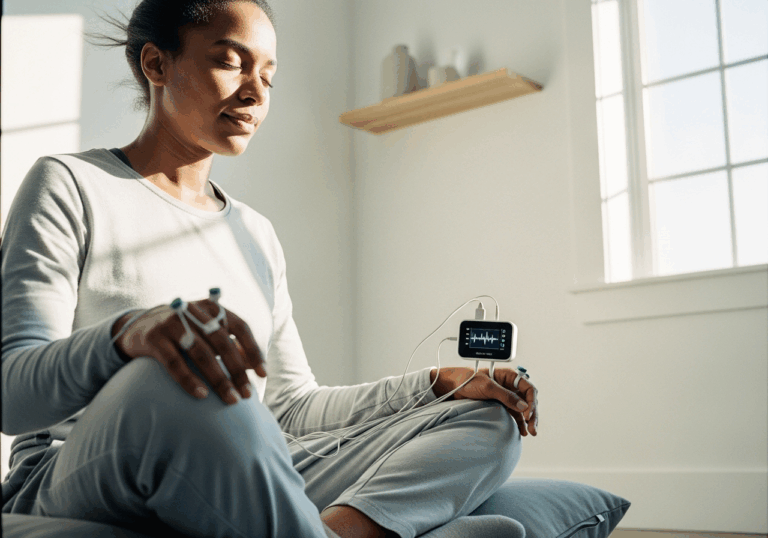Science-Backed Tips
Breathe Deeply to Reduce Anxiety and Boost Heart Health
Diaphragmatic breathing can lower anxiety by 30% in 4 weeks.
📊 Did you know?
💡 Why It Matters
1️⃣
Diaphragmatic breathing can lead to a 30% reduction in anxiety symptoms.
2️⃣
Improved HRV is associated with better cardiovascular health and stress resilience.
3️⃣
Home-based breathing exercises provide an accessible intervention for mental health support.
✅ Try These Micro-Tips
🎯
Practice diaphragmatic breathing for 10 minutes, twice daily.
🎯
Aim for a breathing rate of 6 breaths per minute during sessions.
🎯
Incorporate this practice into your morning and evening routines.
🎯
Use guided breathing apps to enhance your practice.
📚 The study
Embrace the power of your breath and unlock a healthier, happier you!
❓ Frequently Asked Questions ❓
Learn more
What is diaphragmatic breathing?
Diaphragmatic breathing is a deep breathing technique that engages the diaphragm, allowing for fuller oxygen exchange. It promotes relaxation and can help reduce stress and anxiety levels.
How often should I practice diaphragmatic breathing?
It is recommended to practice diaphragmatic breathing twice daily for 10 minutes each session. Consistency is key to experiencing the benefits over time.
What breathing rate should I aim for during practice?
Aim for a breathing rate of approximately 6 breaths per minute during your diaphragmatic breathing sessions. This slow rate helps maximize relaxation and improve heart rate variability (HRV).
How long does it take to see results from diaphragmatic breathing?
Significant improvements in anxiety and depression symptoms can be observed after just 4 weeks of consistent practice. Regular engagement in this technique can lead to a 30% reduction in anxiety symptoms.
Can diaphragmatic breathing improve heart rate variability (HRV)?
Yes, diaphragmatic breathing has been shown to significantly improve heart rate variability (HRV). Improved HRV is associated with better cardiovascular health and increased stress resilience.
Is diaphragmatic breathing suitable for everyone?
Diaphragmatic breathing is generally safe and beneficial for most individuals, including those with anxiety and depression. However, individuals with certain medical conditions should consult a healthcare provider before starting any new breathing exercises.
How can I incorporate diaphragmatic breathing into my daily routine?
You can incorporate diaphragmatic breathing into your morning and evening routines for optimal benefits. Setting reminders or using guided breathing apps can help you stay consistent with your practice.
What are the mental health benefits of diaphragmatic breathing?
Diaphragmatic breathing can significantly reduce symptoms of anxiety and depression. It serves as an accessible home-based intervention for mental health support.
Can I use apps to help with diaphragmatic breathing?
Yes, using guided breathing apps can enhance your diaphragmatic breathing practice. These apps often provide instructions and timers to help you maintain the correct breathing rate.
What should I do if I feel uncomfortable during diaphragmatic breathing?
If you feel uncomfortable while practicing diaphragmatic breathing, stop and return to your normal breathing pattern. It may be helpful to consult a healthcare professional for guidance on proper technique.





